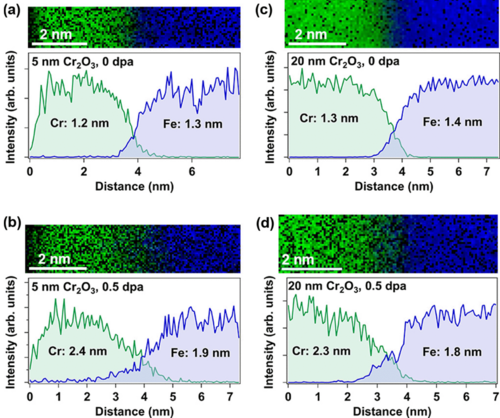Oxide Radiation Damage Paper Published in Phys Rev Mater
Our new paper on radiation damage in Fe3O4 / Cr2O3 thin films has been published in Physical Review Materials! Led by Tiffany Kaspar, we examine how interface quality and defects such as dislocations affect the radiation response of these interfaces. These results will guide the development of oxides in extreme environments.
From the abstract:
Disordering processes in oxide materials are complicated by the presence of interfaces, which can serve as either point defect sinks or accumulation sites; the response depends on factors such as interfacial structure, chemistry, and termination. We have characterized the disordering of epitaxial Fe3O4(111)/Cr2O3(0001) thin film heterostructures after 400 keV Ar2+ radiation at room temperature. The density of misfit dislocations in both the Fe3O4overlayer and Cr2O3 buffer layer is varied by changing the thickness of Cr2O3 to be pseudomorphically strained to the Al2O3 (0001) substrate (5 nm thick) or partially relaxed (20 nm thick), as confirmed by Bragg filtering analysis of scanning transmission electron microscopy images. In both cases, irradiation leads to damage accumulation on the Fe3O4 side of the heterointerface, as shown by Rutherford backscattering spectrometry measurements in the channeling geometry. However, the interface with more misfit dislocations exhibits disordering at a faster rate than the less-defective interface. Likewise, layer-resolved electron energy loss spectroscopy reveals interfacial reduction of Fe after irradiation at the more defective interface. Intermixing of Cr across the interface is observed by atom probe tomography, which is likely facilitated by the generation of Cr interstitials in Cr2O3 under irradiation.
To download the article, click here.
